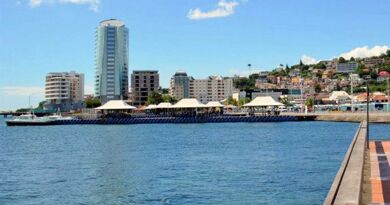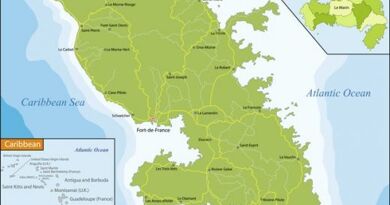Martinique climate and season
Martinique’s climate is tropical maritime. The amount of rain determines the two seasons with more or less marked transitions depending on the year.
Dry season from December to May. Relatively dry, cool and pleasant weather with a few rain showers. The Azores high is moving south, the trade winds are frank and regular, fairly strong and stable in an east to northeast direction. The clouds are poorly developed. Hivernage
Wet and rainy season from June to November. The Azores high rises north, directing an irregular, weaker, and above all wetter, trade wind over Martinique. The clouds with strong vertical development are numerous, the showers frequent and strong. It is hot, the weather sometimes becomes heavy. tropical waves can then form. some may develop and organize into depression, tropical storm and sometimes become a cyclone.
Two climatic zones
Because of its relief, Martinique is divided into two climatic zones separated by a Lamentin – Trinidad line: The South, slightly uneven, relatively dry and very sunny The north, mountainous and rainy except for a narrow strip of leeward coast, therefore drier.
The rain
It is the determining factor of the climate by the quantities of water collected and the strong variations that exist both between the two seasons (Lent and Hivernage) and between the different regions of the island.
Alizes wind
The other characteristic of the Martinique climate is the east to northeast trade wind, moderate to fairly strong. It blows almost permanently, ensuring good ventilation.
Temperature
The trade wind, soft and humid with its maritime route, limits seasonal and diurnal temperature variations. The average temperature varies from 24 ° in February to 27 ° in August. It decreases from 0.7 to 1 ° per 100m altitude.
Average sea water temperatures 24 to 25 ° from January to March 27 to 28 ° from June to September
The Sun
The reliefs play a decisive role on the sunshine of the regions and those near mountain ranges are influenced by the cloud clusters attached to the relief.




